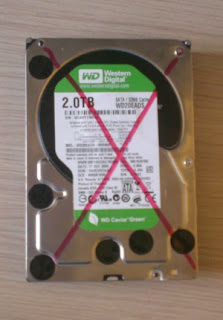There is a widespread opinion that software RAID imposes significant processing power penalty on the host system, thereby decreasing overall performance. For a RAID 0, this is obviously not the case. The only overhead involved is to dispatch the sectors being read or written to their appropriate disk, requiring a fairly simple calculation once for every sector (512 bytes of data) written. RAID 5 and RAID 6 are more complicated. There is a requirement that parity data is computed for each write. However, the processing power requirements are modest and the resources are in abundance. Given the 100 MB/sec write speed, we need, say, 1,000 MIPS (Million Instructions Per Second) to calculate the parity. Also, there will be an additional memory bandwidth requirement of, say, 200 MB/sec (100 MB/sec in and out). Properly designed caching would alleviate the load even further. Still, a pretty modest CPU (made circa 2005) can provide about 15,000 MIPS and about 5,000 MB/sec memory bandwidth. So


